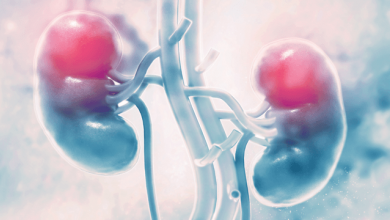Search results
Author(s):
Kiran K Khush
,
Sharon A Hunt
Added:
3 years ago
The field of heart transplantation has evolved tremendously since Alexis Carrel first explanted a canine heart and anastomosed it to the carotid artery and jugular vein of a recipient dog in 1905.1 In 1960, Norman Shumway and Richard Lower at Stanford described a technique for orthotopic canine heart transplantation and demonstrated adequate physiologic function of the denervated heart.2 Their…
View more
Author(s):
Dominik Wiedemann
,
Thomas Haberl
,
Julia Riebandt
,
et al
Added:
3 years ago
History of Mechanical Circulatory Support
The first reported clinical use of a left ventricular assist device (LVAD) was by Liotta and Crawford in 1963. Via a left thoracotomy, an intracorporeal pneumatically driven pump was implanted using left atrial inflow and descending thoracic aortic outflow. Despite the successful implantation, the patient died within a short period of time after the…
View more
Author(s):
Antoni Bayés-Genís
,
Christian Muñoz-Guijosa
,
Evelyn Santiago-Vacas
,
et al
Added:
3 years ago
“The time is always right to do what is right.”
– Martin Luther King Jr (1929–1968)
Heart failure (HF) has increased at a fast pace during the 21st century to become the main cause of morbidity and mortality for patients with cardiovascular disorders in developed nations, leading to increasing healthcare costs and declining quality of life. The expected prevalence of HF was ~25 million in 2011,…
View more
Author(s):
Dan Wichterle
Added:
3 years ago
Myocardial infarction (MI) is associated with acute risk of early malignant arrhythmias that can be easily treated during in-hospital intensive care by defibrillation, adjuvant antiarrhythmic therapy or even catheter ablation in resistant cases. Indeed, such management resulted in substantial improvement in MI survival rate. Despite the implementation of primary percutaneous coronary…
View more
Author(s):
Patrycja Ganslmeier
,
Christof Schmid
Added:
3 years ago
End-stage heart failure is a leading cause of death of modern society. In the US almost five million people suffer from heart failure, with an annual incidence of 500,000 new cases. About 10% of the population beyond 70 years of age are affected (www.nhlbi.nih.gov). Estimations for Europe amount to 10 million and heart failure has overtaken cancer as the leading cause of death (www.destatis.de)…
View more
Author(s):
Christopher S Hayward
,
Marc Swartz
Added:
3 years ago
Heart failure is an escalating global pandemic and one of the leading causes of death and disability in the developed world. At present, the incidence of heart failure in the Western world is staggering, affecting approximately 6.5 million people in Europe and 5.8 million people in the US.1–3 Even more alarming is the notion that approximately 10 % of this population suffers from advanced heart…
View more
Author(s):
Rishi Naik
,
Indrajeet Mandal
,
Diana Gorog
Added:
1 year ago
Author(s):
Alda Huqi
,
Giacinta Guarini
,
Doralisa Morrone
,
et al
Added:
3 years ago
Myocardial revascularisation in patients with stable chronic angina is performed with the aim of reducing cardiovascular death, reducing myocardial infarction (MI) and relieving angina symptoms. However, contrary to expectations, modern therapy with percutaneous coronary intervention (PCI) has not had a significant impact on hard outcomes.1–5 Indeed, as also summarised in a recently published…
View more
Author(s):
Miriam Shteinshnaider
,
Dorit Almoznino-Sarafian
,
Sylvia Berman
,
et al
Added:
3 years ago
Abstract
Little is known about gender-related differences in clinical variables affecting the survival in inpatients with atrial fibrillation (AF). We recorded and compared clinical data and long-term mortality between 126 males and 124 females hospitalised with paroxysmal/persistent AF. Women were older and more symptomatic than men. Hypertension and renal dysfunction were more common in…
View more
Author(s):
Gautam R Shroff
,
Michelle D Carlson
,
Roy O Mathew
Added:
2 years ago












